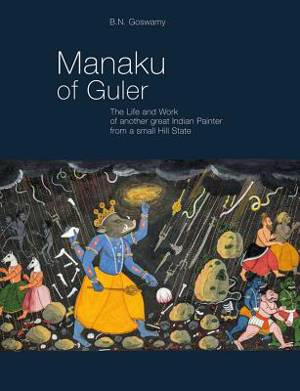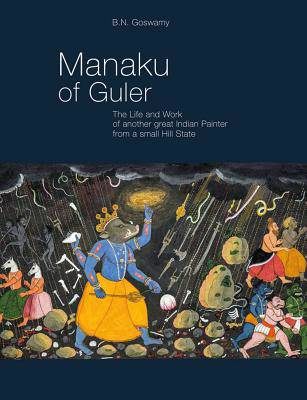
- Afhalen na 1 uur in een winkel met voorraad
- Gratis thuislevering in België vanaf € 30
- Ruim aanbod met 7 miljoen producten
- Afhalen na 1 uur in een winkel met voorraad
- Gratis thuislevering in België vanaf € 30
- Ruim aanbod met 7 miljoen producten
Zoeken
Manaku of Guler
The Life and Work of Another Great Indian Painter from a Small Hill State
B N Goswamy
Hardcover | Engels
€ 131,95
+ 263 punten
Omschrijving
This work centers upon Manaku of Guler - older brother of the greatly celebrated Nainsukh - reconstructing whatever little is known of his life, but following closely his artistic journey. Manaku came from an obscure little town in the hills of northern India - home to his singularly talented family - and yet his vision knew almost no limits. Endowed with soaring imagination and great painterly skills, this man - with a name that literally means a ruby, whose glow keeps hinting at an inner fire - was capable of painting giant rings of time upon timeless waters, envisioning the world of gods and demons, littered with cosmic battles and earthly triumphs. At least three great series were painted by Manaku: the Siege of Lanka which took forward the narrative of the Ramayana from the point where his father, the gifted Pandit Seu, had left it; the Gita Govinda and the Bhagavata Purana. Every single folio that has survived and is at present accessible - the number comes close to five hundred - from these series finds a place in this uncommonly rich volume. For the second time - Nainsukh of Guler was the first (also published by Niyogi Books) - Professor Goswamy looks here at the entire body of work of a great Indian artist from the past.
Specificaties
Betrokkenen
- Auteur(s):
- Uitgeverij:
Inhoud
- Aantal bladzijden:
- 512
- Taal:
- Engels
Eigenschappen
- Productcode (EAN):
- 9789385285820
- Verschijningsdatum:
- 17/04/2018
- Uitvoering:
- Hardcover
- Formaat:
- Genaaid
- Afmetingen:
- 241 mm x 305 mm
- Gewicht:
- 2721 g

Alleen bij Standaard Boekhandel
+ 263 punten op je klantenkaart van Standaard Boekhandel
Beoordelingen
We publiceren alleen reviews die voldoen aan de voorwaarden voor reviews. Bekijk onze voorwaarden voor reviews.








